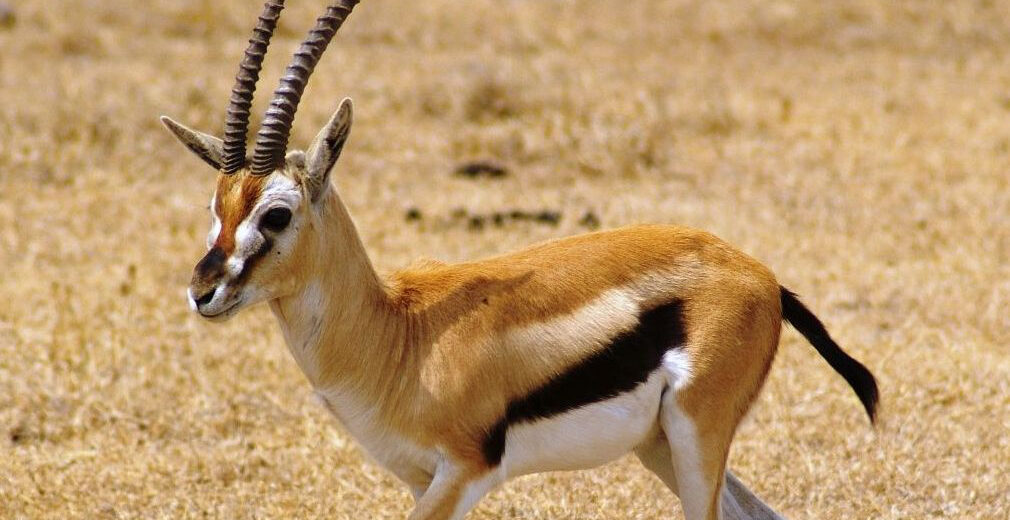
Sometimes referred to as a “tommie”, the Thomson’s gazelle is one of the faster land animals on earth, after the cheetah. The Thomson’s gazelle is just one of approximately 20 known species of gazelles that can be found in Africa’s savannas and grassland habitats, primarily in the Serengeti region of Kenya and Tanzania. Thomson’s gazelles live in open plains and grasslands in the southern parts of Kenya and northern parts of Tanzania. These gazelles are listed as Least Concern by the IUCN.
First the Stats…
Scientific name: Eudorcas thomsonii
Weight: Up to 51 lbs.
Length: Up to 2.9 feet
Height: Up to 32 inches, at the shoulder
Lifespan: Up to 15 years
Now on to the Facts!
1.) Both the males and females have horns. Males have longer horns than females.
2.) Male and female gazelles live in separate herds. The female herds are often much larger. The males will fight for dominance, breeding rights, and territory by using their horns to topple their opponent.
3.) They are social animals and live in herds of over 200 individuals.
4.) Lions, leopards, hyenas, hunting dogs, and cheetahs (to name a few) all prey on Thomson’s gazelles.
5.) The Thomson’s gazelle gets most of their daily water requirements from the plant matter they eat.
But wait, there’s more on Thomson’s gazelle!
6.) While running, the Thomson’s gazelle occasionally leaps in the air with all 4 feet off the ground. This technique is known as “stotting” or “pronking”.
7.) The gazelles mate twice a year and a single fawn is born during the rainy season.
Did you know…?
These gazelles can run at speeds of up to 43 mph!
8.) Thomson’s gazelles, like all gazelles, are herbivores (eat plant matter). Their diet consists of approximately 90% grasses and 10% seeds and shrubs.
9.) If you wonder how they can escape a speeding cheetah, they don’t outrun their attacker, they outmaneuver it.
10.) The young are able to stand and walk shortly after birth.
Now a Short Thomson’s Gazelle Video!
Also, check out the Critter Science YouTube channel. Videos added frequently!
Want to suggest a critter for me to write about? Let me know here.



